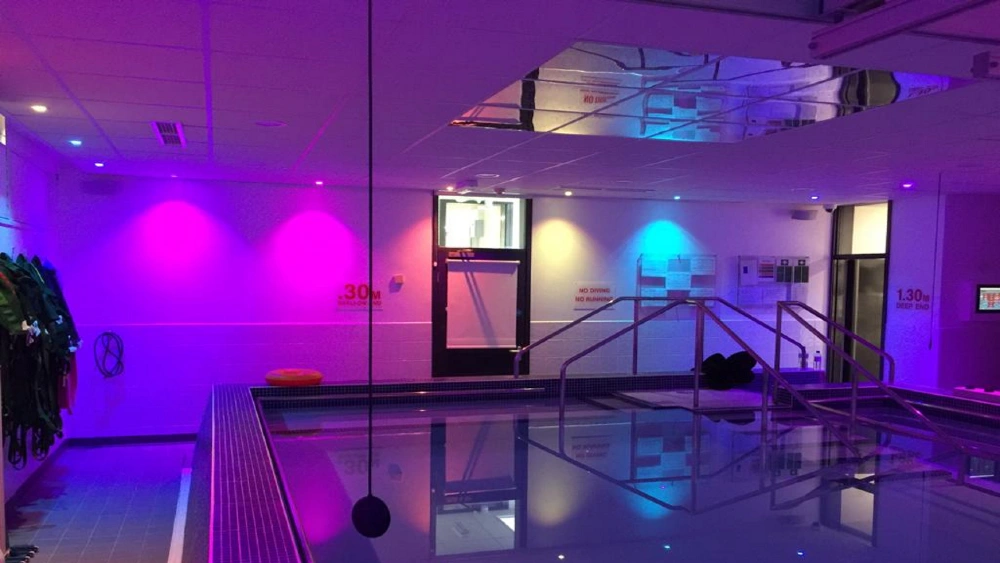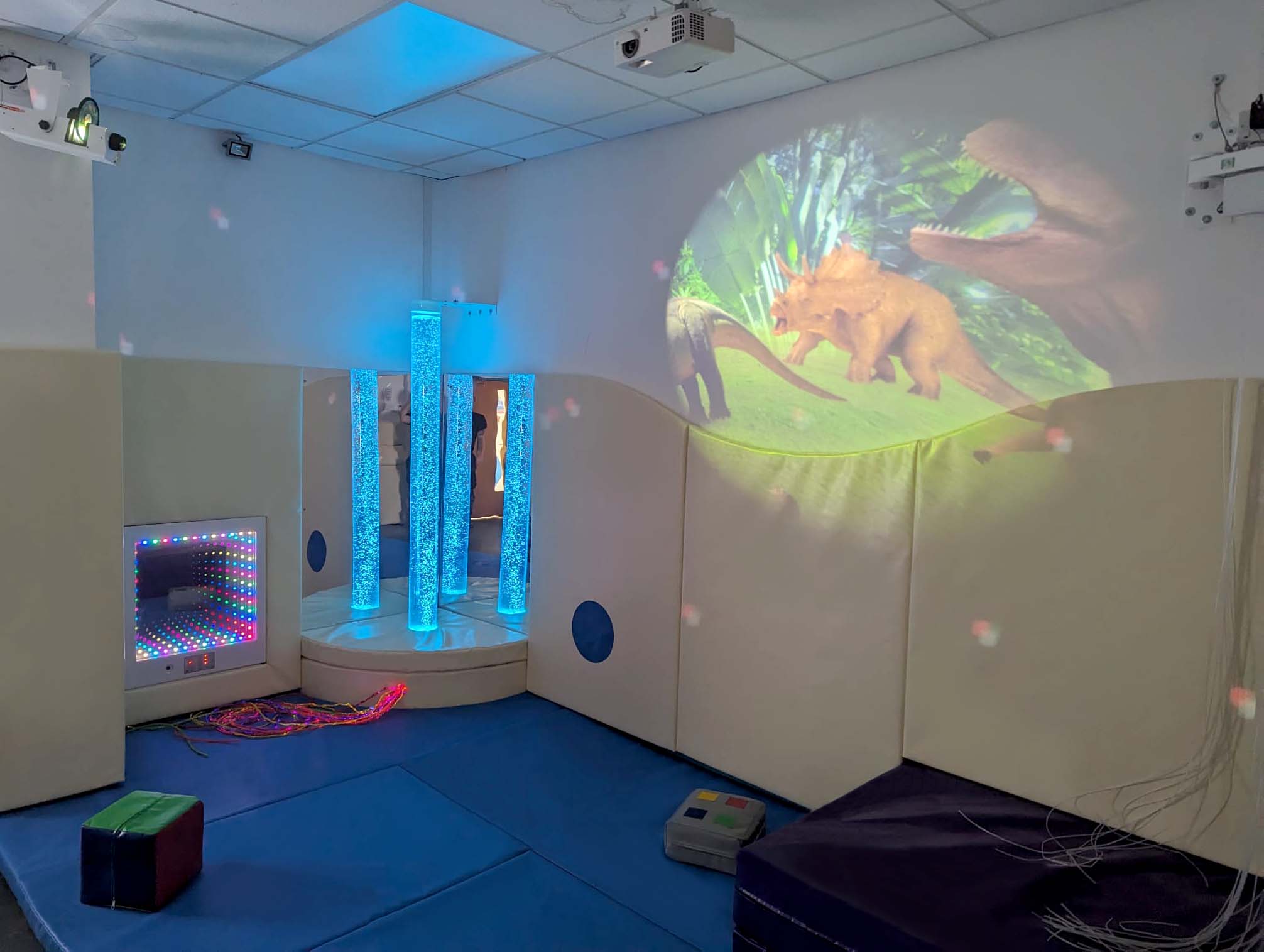We know how impactful a sensory experience can be for neurodivergent children and adults. From calming rooms to swimming pools, many interpretations of these sensory experiences have an essential role in people’s lives. But in this blog, we’re going to look into the challenges individuals with autism face and how a sensory room can help manage these challenges.
Understanding Sensory Challenges in Autism
Autistic individuals often experience the world in a way that differs from neurotypical people due to variations in sensory processing. This means they may be more sensitive to certain sounds, textures, tastes, or lights, while others might seek additional interactivity to feel regulated. These differences can make everyday environments either overwhelming or under-stimulating, affecting comfort, focus, and emotional well-being.
Hypersensitivity vs. Hyposensitivity
When we think about how many experiences can cause sensory triggers, there’s a long list, however, they typically fall into two categories: hypersensitivity (over-responsiveness) and hyposensitivity (under-responsiveness).
- Hypersensitivity means someone may be highly reactive to stimuli. These could be bright lights, loud noises, or unexpected touches that may feel overwhelming, leading to distress or sensory overload.
- Hyposensitivity, on the other hand, means someone may not process information as strongly and may actively seek additional input. This could involve enjoying strong textures, moving frequently, or being drawn to flashing lights and intense sounds.
Common Sensory Triggers and Difficulties
What are commonly called ‘meltdowns’ when someone with autism is overwhelmed, are often not caused by a single factor but by a build-up of multiple triggers throughout the day.
What may seem like a small reaction to a minor circumstance is often the result of prolonged discomfort, stress, or difficulty processing the environment. Understanding these triggers helps create spaces that support regulation and reduce distress to make a positive impact for everyone involved.
Some of the most common triggers include:
- Overwhelm – Too much noise, bright or flickering lights, strong smells, or uncomfortable clothing can contribute to sensory overwhelm, making it difficult to focus or function in the moment.
- Sudden change – Sudden shifts in routine, unexpected social interactions, or new environments can cause heightened anxiety and distress.
- Physical needs – Hunger, thirst, being too hot or cold, tiredness, or physical discomfort can make it harder to regulate emotions.
- Social situations – Misunderstandings, pressure to engage in conversation, or being in busy, unpredictable spaces can add to stress levels.
- Emotional overload – Highly emotional situations, whether positive or negative, can feel overwhelming and increase the risk of a ‘meltdown’.
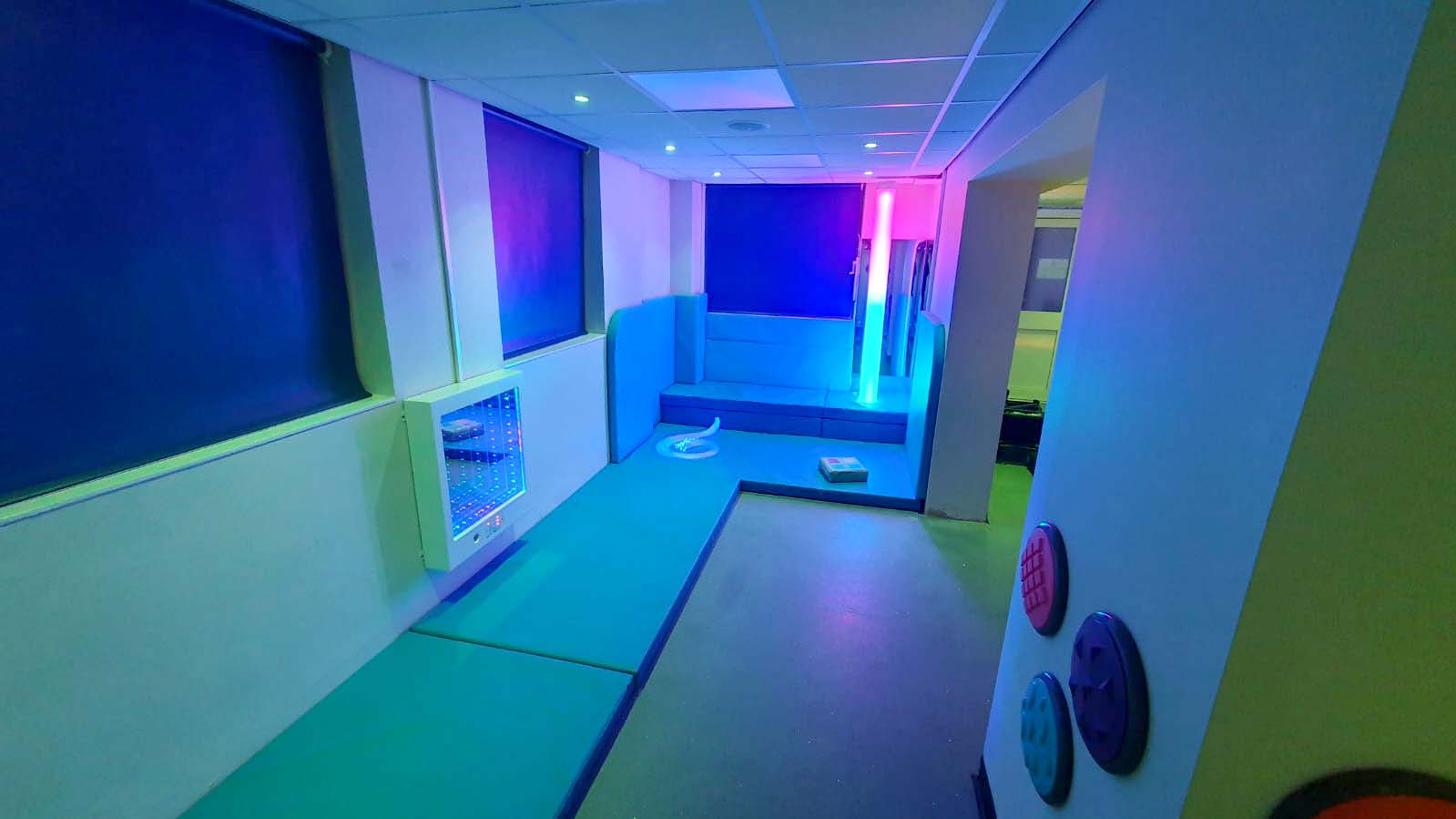
How Sensory Rooms Provide Support
A comfortable environment is the most important and simplest form of support for individuals with autism. These spaces need to provide them with a balance between stimulation and relaxation, ensuring that they can engage with their surroundings in a way that feels safe and manageable.
Managing Overwhelm
To support overwhelm, a sensory room offers a controlled space where factors like lighting, sound, and textures can be adjusted. Adjustable lights, soft furnishings, and noise-reduction elements help create a peaceful space, reducing external stress and allowing for better self-regulation.
Providing Stability
When unexpected changes occur in a routine, this can trigger heightened anxiety or stress within the moment. In a similar way to managing overwhelm, sensory rooms offer a predictable space, which is very important for those with autism to know. The familiarity of the room provides a sense of consistency, helping individuals process change in a structured way.
Supporting Physical Regulation
We all have basic physical needs like hunger, thirst, tiredness, or temperature discomfort which can make emotional regulation more difficult. However, the importance of each point increases tenfold in size for autistic individuals.
Depending on the trigger, the features in a sensory room can change the situation very quickly, like weighted blankets for deep-pressure stimulation, temperature control, and soft seating to encourage relaxation, allowing individuals to manage their physical needs before further escalation.
Away from Social Pressures
Social situations can be very stressful, particularly when there’s an expectation to engage in conversation. Sensory rooms offer an environment where individuals can take a break from the social environment and regulate at their own pace.
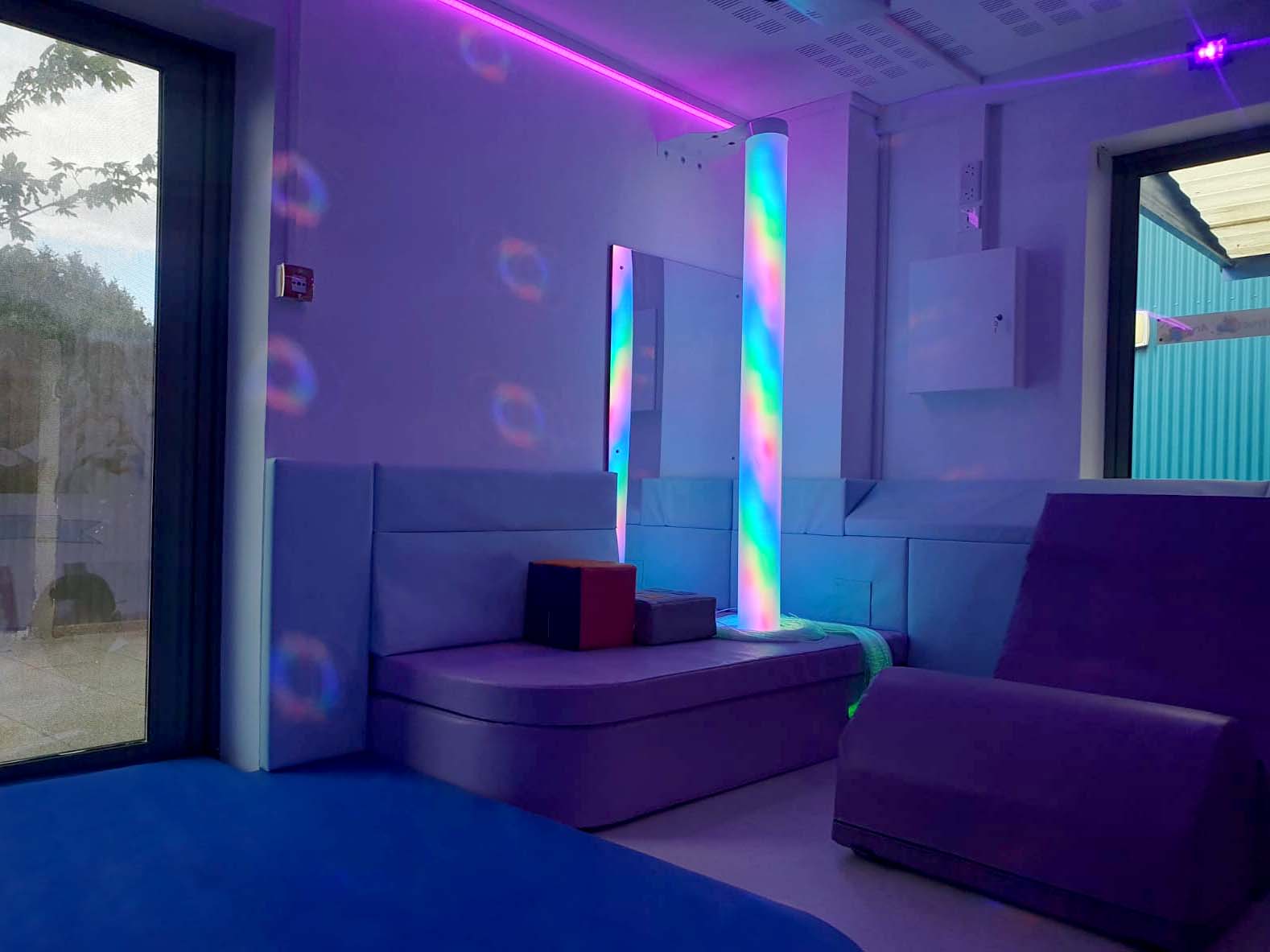
Different Sensory Room Elements
Some of the most important features of a sensory room include lighting, sound and tactile elements. Across the many sensory rooms we’ve designed over the years, these features have been included in almost all of them:
- Lighting
The colour and intensity of lighting can have a significant impact on mood, focus, and emotional regulation. When designing a sensory room we take into account the needs of the user(s). Soft, adjustable lighting helps create a calming environment, while interactive colour-changing lights engage and stimulate the senses. Bubble tubes, fibre optic strands, and LED panels offer visuals that help with relaxation or focus.
- Sound
Carefully chosen sounds in a sensory room provide a sense of calm or stimulation, depending on the individual’s needs. White noise helps to block out overwhelming background noise, while nature sounds and gentle music can create a soothing atmosphere. Interactive elements create a wondrous environment by using sound-responsive panels, allowing individuals to engage multiple senses.
- Tactile Features
Textures play a crucial role when we design a sensory room, particularly for individuals who need to explore different sensations to feel comfortable. Tactile discs and tactile activity panels are a popular sensory room addition that provide a hands-on sensory experience with a range of fun activities for users to engage with.
- Soft Furnishings
Soft furnishings such as bean bags and seating plinths provide added comfort for users whilst relaxing or playing. Additionally, soft play items can be incorporated into sensory rooms to provide a variety of challenges and rewards for users to explore in a safe way.
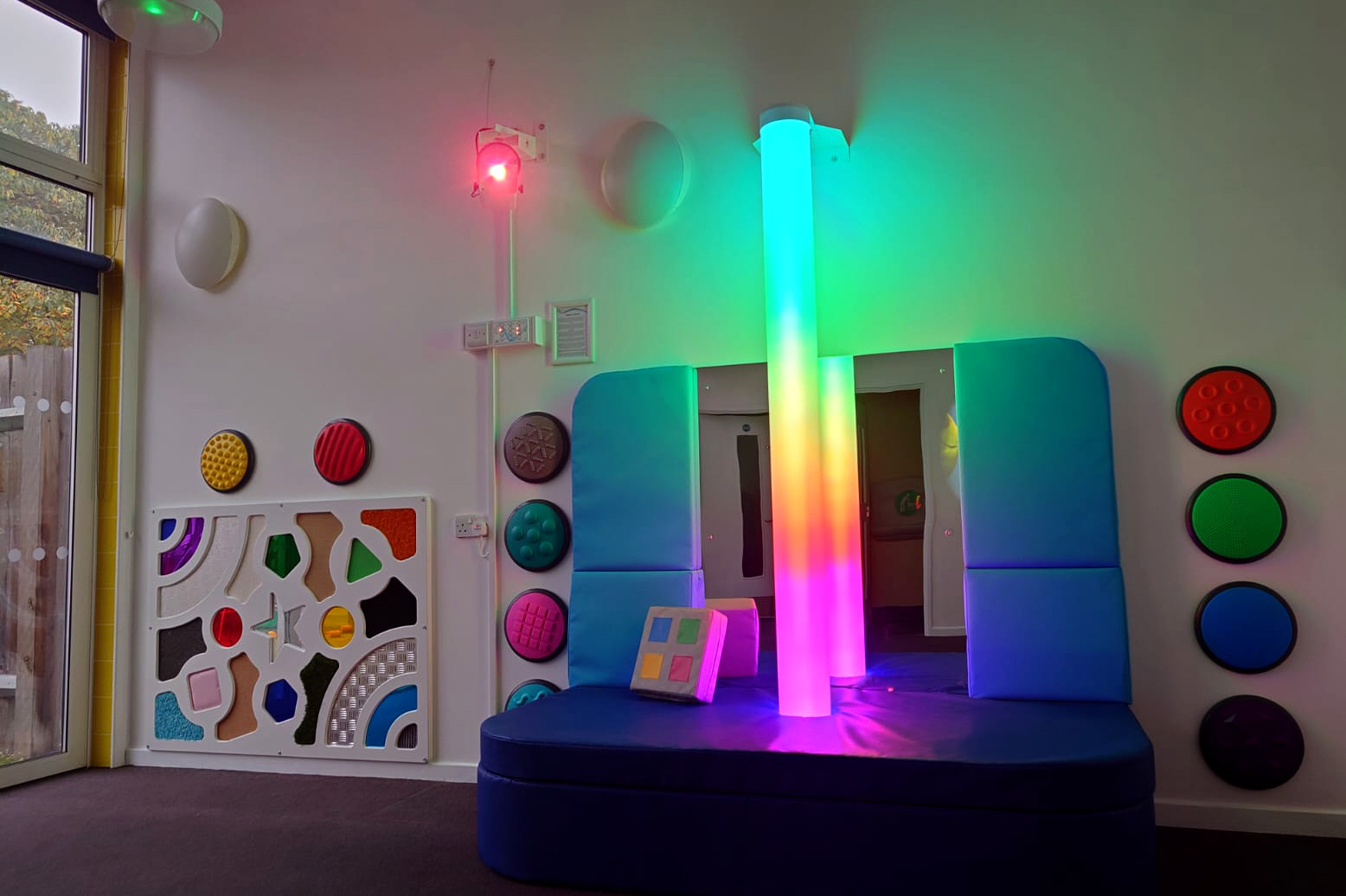
Final Thoughts
When designing a Sensory Room we take into consideration all the needs of those who will be using it, which is why understanding triggers, challenges and common environments is so important. If you’re interested in starting the process or would simply like more information, get in touch with our team of experts to get started!


